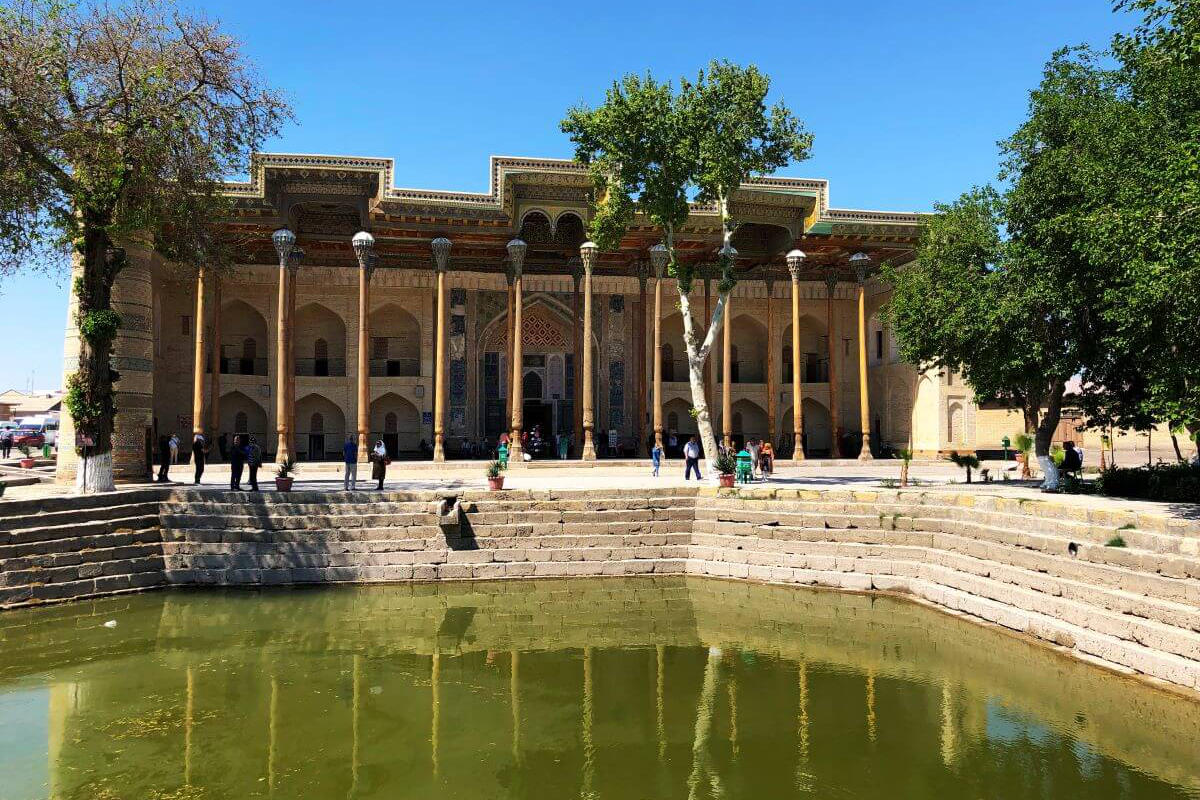Bukhara - Bolo Havuz Complex

The Bolo Havuz Complex in Bukhara: a historical jewel of Central Asia
The great cities of the Orient had one striking thing in common: the mandatory existence of a registan. This central city square was the centrepiece of public life, surrounded by important buildings such as mosques, palaces, minarets, hospitals, chambers of commerce and the state chancellery. It served not only as a religious and political centre, but also as an economic and social meeting place.
Bukhara, one of the most important cities in Central Asia, also had its own Registan, which was located opposite the imposing Ark Fortress. Unfortunately, most of the buildings on this square have not survived. The only structure that still exists today is the Bolo Havuz complex, which was built at the beginning of the 17th century by order of Emir Shakhmurad. This ruler wanted to demonstrate to the population that he was a modest and popular leader. He therefore had a public mosque built on the Registan, which he personally visited every Friday for prayers.
The name ‘Bolo-Havuz’ can be translated into German as ‘children’s pool’. This is because the complex was originally used as a water source. Central Asia traditionally suffered from water shortages, which is why it was necessary to build artificial reservoirs (havuz) to supply the population with drinking water. Water carriers fetched the water from these reservoirs and distributed it for a fee at the bazaar, in hospitals and in residential areas.
This practice of supplying water continued in Bukhara until the Soviet Union came to power. To prevent mass illnesses caused by stagnant water, the new government banned the use of the reservoir. Nevertheless, many residents clung to the old water source out of tradition, so that the reservoir eventually had to be drained.
The Bolo Havuz mosque has been preserved to this day and continues to serve as a place of prayer for worshippers. Its impressive and magnificent appearance still bears witness to the former power and wealth of the Emir. The twenty ornately carved wooden columns that support the roof of the mosque are particularly striking. Due to their reflection in the water reservoir, the mosque was nicknamed the ‘Mosque of Forty Columns’, as their reflection suggested a double number of columns.
Not far from the mosque is an elegant minaret, which was built somewhat later. Its refined architecture combines the splendour and monumental architecture of Central Asia. For a long time, the minaret was slightly inclined, which earned it comparisons with the Leaning Tower of Pisa. However, after extensive restoration work, the structure was stabilised and brought into an upright position.
Today, the Bolo Havuz complex is one of the most famous sights in Bukhara. It attracts visitors from all over the world who marvel at its magnificent architecture and historical significance. The site bears witness to Bukhara’s former cultural and political heyday and remains a valuable legacy of Central Asia.
